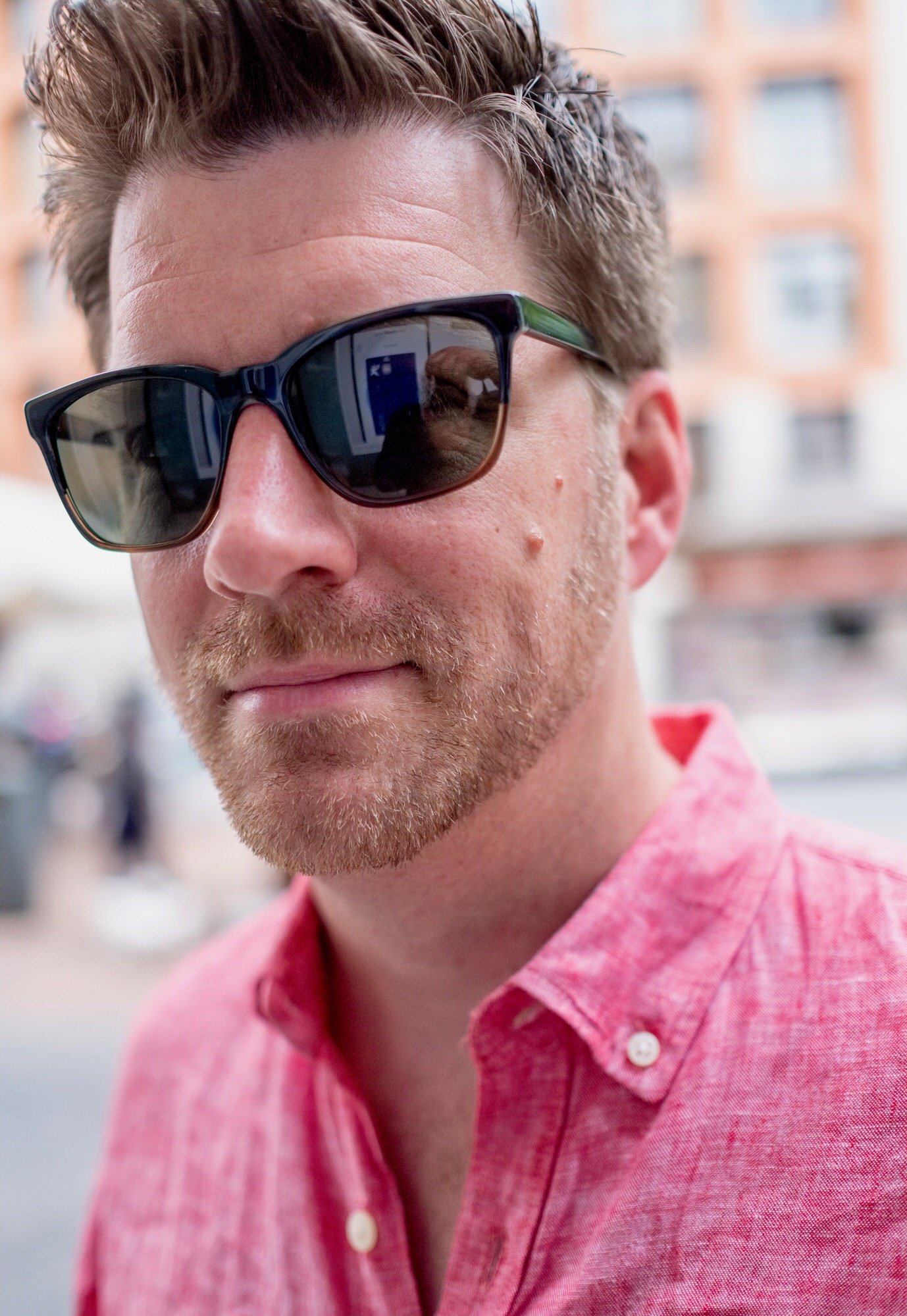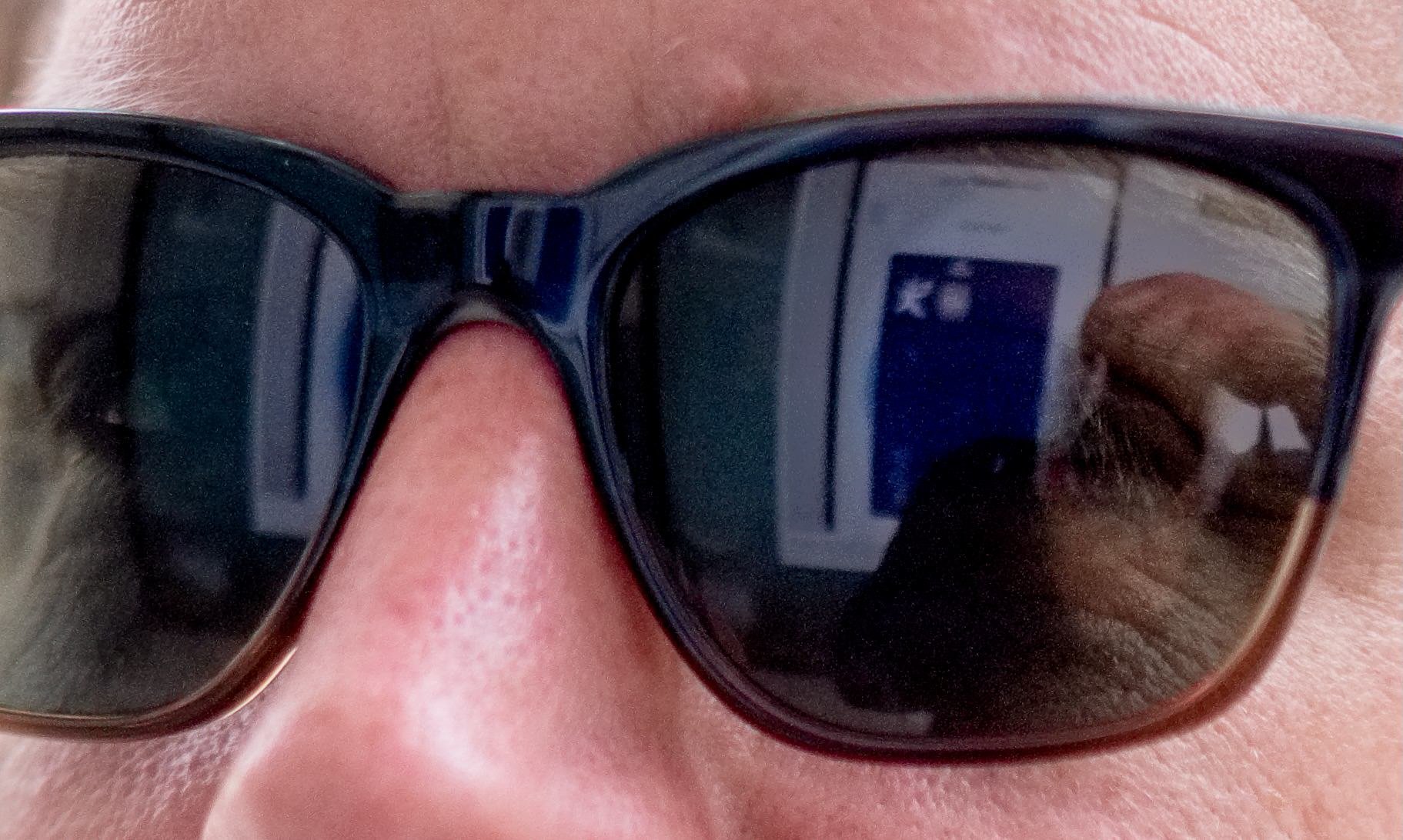Being Seen In A Photograph - A Reflection
Image of me taken by Manolo
Being Seen In A Photograph
I have thought a lot about this encounter because it was very personal and something that has impacted me every day since this portrait was created. It has opened a new understanding of the ability of a camera to change people and what a photo can mean in the best circumstances.
There is a homeless man who lives outside of our building in Madrid. We pass him almost every day walking with my son to school. I will sometimes offer him some money, groceries, a pack of cigarettes or even food on occasion. Sometimes he accepts what I have, and sometimes he tells me he’s already full, or he doesn’t like to eat what I have. My Spanish was basic on the best of days, to my personal frustration and shame, but we try to speak to him every time we see him, at his best and his worst, we make it a point to teach my son that all people are worthy of being acknowledged and accepted (while discussing safety too). After several months, it has become a natural part of our days, but still, I take notice of it each day and I think about him if he isn’t there.
He sees me with my camera every day, and a couple of weeks ago, he stopped me and asked me if I was a photographer because he always sees me with a camera. I said, yes, or at least I am trying to become one. Then to my surprise, he asked if he could take my picture as if it was the most natural thing to happen next. I was surprised but honored and felt that the least I could do was to allow him to take my picture. After reflecting a bit, I love the fact that he felt comfortable enough to have this conversation despite our language barrier.
I was more surprised when he grabbed the camera with one hand like it was his own, he stood, moved me several feet into more favorable light, asked me to keep my head forward as he moved to my right, asked me to turn slightly towards him and not to smile, adjusted the manual shutter and exposure, stepped forward and captured this image. That’s him, Manolo, in the reflection of my glasses and this was how he saw me.
One exposure, maximum 30 seconds, no “chimping,” he gave me back the camera and asked me to look at the picture…I was honored by the process, but I was blessed by the final image. It struck me almost speechless in combination with the exchange. This was a beautiful street portrait by any reasonable measure, notwithstanding that this was not his camera and it was a new Fuji X-E3 with a lot of buttons and touch screen, etc… It was new to me and it took me a day before I was comfortable shooting with it. (I don’t want to come across as condescending, only emphasizing the power and strangeness of the moment).
I was meeting my family for dinner, so I had to go soon after, but the exchange hung, suspended, in my mind on multiple levels. On one level, it emphasized the exchange of photography. It’s easy to get comfortable with the voyeuristic stereotype of photography, the view that the photographer grabs a moment or a subject and composes and sets that moment in a triumphant, artistic visual sentence for her viewer. But in reality, at its core, it’s a powerful exchange. Every amazing image has a heartbeat or a soul and it’s more than technical mastery or an algorithm, but a lens collecting a living moment with imagination.
On another level, it reminded me of the power of a photograph. Great photos tell stories, and we can sometimes marvel at the beauty of a frozen frame, but, now and then, a photo has a sound a voice, or a smell and that’s what we are all trying to capture when we click the shutter release for the thousandth time.
On still another level, it struck me how photography can be an equalizer, the democracy of the shutter. It’s all well and good to care for someone in need, to help someone in need, but it’s hard to do that in a respectful way that empowers them and doesn’t degrade them or turn from empathy to pity or worse into entertainment and something exotic. Even for those of us who are trained in working with underserved and underprivileged communities, it can be hard to do well. This was a moment that we shared, we both looked at each other for months and this photo was an accumulation of those small moments and an acknowledgment that we are humans and in this together. We saw each other and in that moment, I was his subject. This was his narrative and it felt right.
The last thing that the encounter has changed for me, is what it means to receive a portrait. I enjoy people and their differences, I love the things about people that make them unique and I think that is what strikes me about portrait photography. But I am always hesitant to ask someone to take their picture on the street or to interrupt the flow of their lives and insert myself or my curiosity into their day. I hate interrupting… But this exchange changed my understanding of what we can do as photographers.
When you take a photo…even when I write that, it feels weird to say “take” a photo because you don’t take anything really, you capture or witness or create a portrait. But when you create a portrait for someone, it's not taking, an imposition, its a creation…an acknowledgment. He acknowledged me and there is power for both of us in that exchange. It has really changed my thoughts about it and I have had an overwhelming urge to recreate that feeling of understanding and acknowledgment with my camera again. The street scenes feel slightly less alluring and I am much more drawn to faces than I have been while shooting the streets of my new home over the last few months.
I didn’t see him for a couple of days after the photo, but on one of my evening walks a few days later I finally saw him and told him thank you for the portrait, that it was a great photo and I showed it to him on my phone. He was excited and spoke too fast for me to understand our entire exchange, but it came to light that he was a photographer, I wasn’t able to understand if he was a professional or just enjoyed photography as an enthusiast (I’m choosing to overlook all of the starving photographer jokes in reverence to the seriousness of the moment personally, but those of you that know me, know I love a dark shadow of irony and sarcasm in any context).
He told me a couple of stories of him with his Pentax taking pictures of families and how he knew what shot he wanted and they would think it looked weird or they didn’t trust his direction, but in the end, they were surprised by the photos he took and that they always loved his photos. He was very animated and excited to share the stories like we all are when we meet another who appreciates talking photography.
You can see his reflection my glasses and I’ve always loved that detail.
I want to return the favor when the time is right and take his portrait as well. But I feel like it deserves some thought and I’m still reflecting on the moment and what it meant to me. I’m not sure a portrait would feel right yet, but I feel closer to understanding what I want to capture with his portrait each day. I don’t want to rush, but instead, I want to honor the muse that has invited us both to dance and the spirit that has brought us closer together before I press the shutter button. It’s almost a feeling and experience that seems to resist a concrete image at this point.
Update: he disappeared for several weeks after I wrote this, and we were moving apartments, so I thought I might never see him again. But just a few days before we moved, I saw him again in the same place, newly-shaven and with new glasses. We spoke briefly and he had been in the hospital for treatment for something, and he said he was feeling better. I asked if he was going to stay here and he said that he had a bed nearby and he was going to stay there, but he would be back at his spot sometimes.
It was the last time I saw him, I keep an eye out for him when we pass the area, but nothing yet. I wish him all the best.
If you enjoyed what you read, follow me on Medium or sign up for my newsletter below to get notified of more articles or other tidbits about life and photography.
Following the light, one day at a time.
- Aaron

